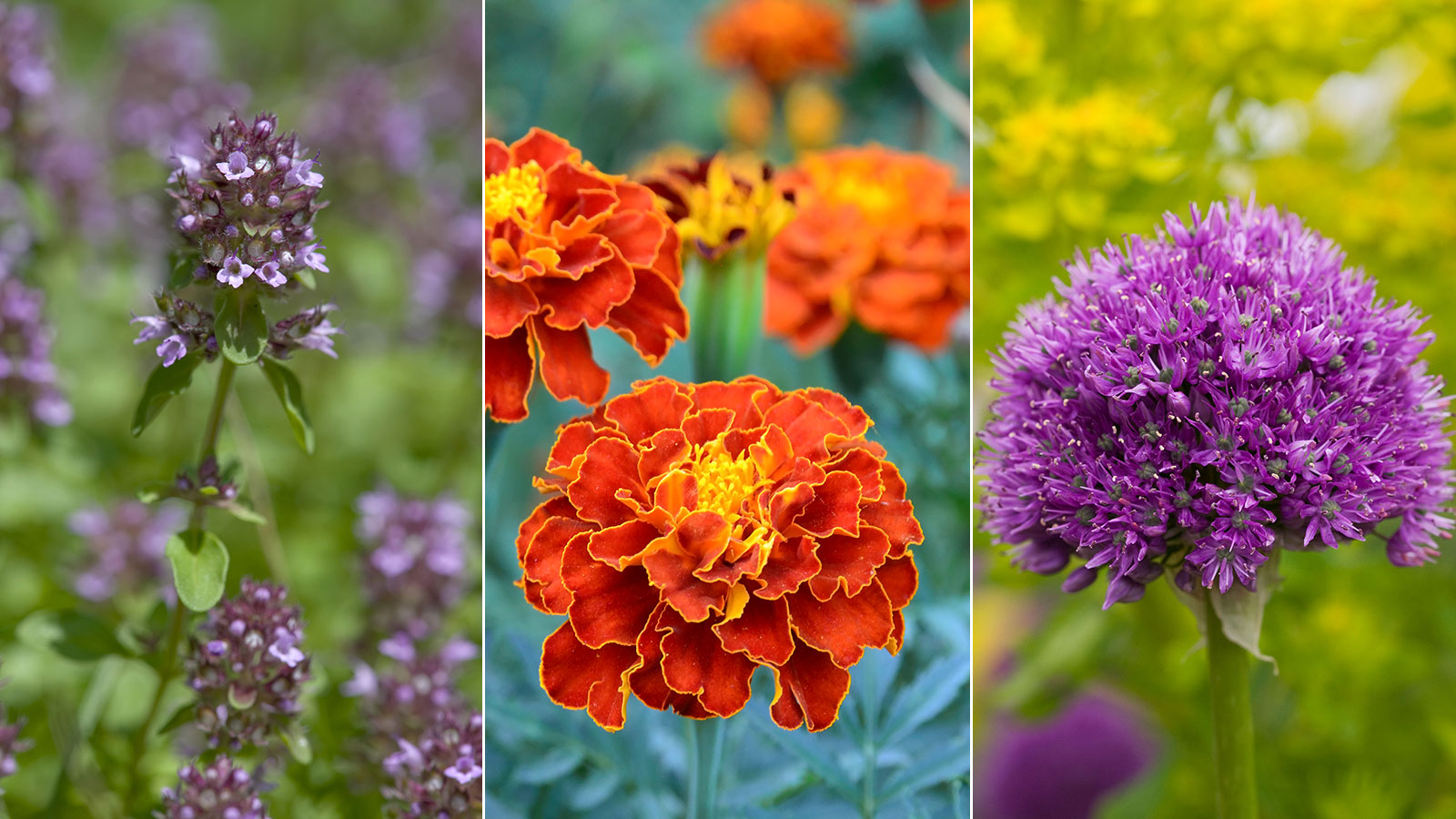
Encouraging nature into our gardens by growing insect-friendly flowers and following planet-friendly gardening practices is very on trend. But let’s be honest, nobody wants wasps or mosquitoes buzzing around them while eating supper alfresco, or to see carefully tended plants destroyed by slugs and aphids.
So how can we deter unwanted mini beasts from entering our yards without reaching for the chemical sprayer? Ideally, we should be growing a wide variety of plants in our yards as well as creating different habitats for wildlife. But no garden is perfect and sometimes a bug population takes over the show, becoming a nuisance.
Picking off pests like slugs, washing off aphid infestations with a hose, and encouraging natural predators are just some of the ‘greener’ methods we can use to control pests. Another option is to grow plants that repel or deter pests. Whether it's mosquito-repellent plants or ones that can deter wasps and flies, the special powers that these useful plants have are scent, taste or texture that are repugnant to pests.
10 pest-repellent plants for a bug-free backyard
Follow our guide below and grow the recommended pest-repellent plants for the problem pests in your garden. Whether you're searching for fly-repellent plants, or plants to deter wasps, you’ll soon be able to enjoy your alfresco supper in peace.
1. Citrus grass (Cymbopogon citratus)
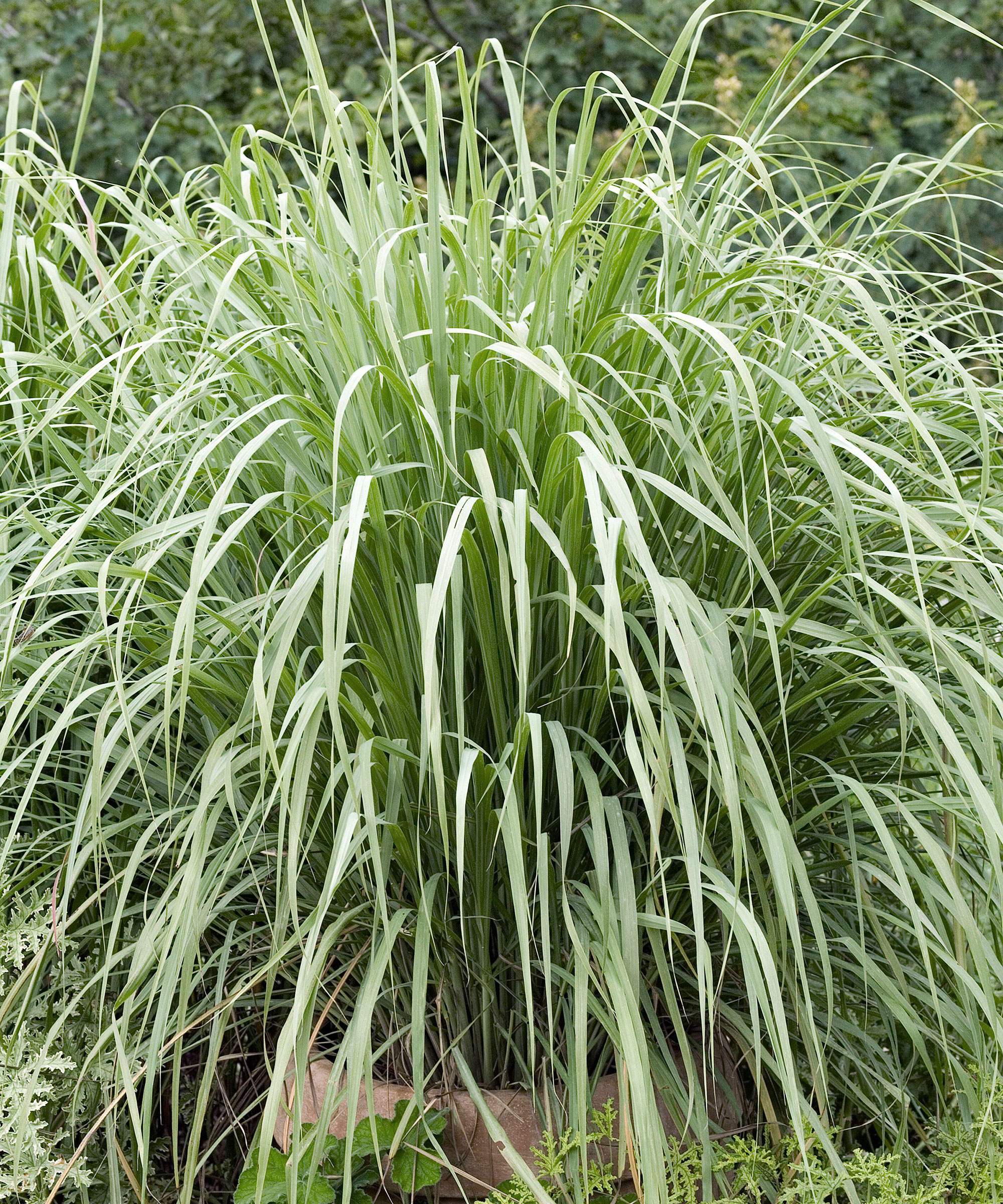
- Best for repelling: Mosquitoes, wasps, houseflies, fruit flies
- Where to plant: Full sun, fertile, well-drained soil
- Hardiness: USDA 10+
Citrus grass (also known as lemon grass) and citronella grass (Cymbopogon nardus), available from Fast Growing Trees, are tender perennials from the tropics. The gorgeous lemony scent of these tropical grasses is uplifting to people, but their acidic aroma is off-putting to a whole range of bugs – not just mosquitoes, but wasps, house flies and fruit flies. They both can be grown to repel pests, but C.citratus is the one to grow if you also want to use the lemon-flavored shoots in Asian cooking.
Citronella grass is grown commercially for its essential oil that’s used in mosquito repellent sprays and creams. Since ancient times, people have rubbed Cymbopogon grass on their skin to ward off mosquitoes, and, according to the US National Library of Medicine, the essential oil from citrus grass and citronella grass is scientifically proven to be an effective mosquito repellent (test a small area of your skin first to check for sensitivity).
Unless you live in USDA zone 10+, you’ll need to over winter Cymbopogon on a sunny windowsill for it does not like temperatures much below 41˚F. Citrus grass is a smaller plant (2-4ft) than citronella grass (6-8ft), so is easier to keep in a pot.
Both require at least 6-8 hours of sun a day, and soil that is fertile, free-draining but kept on the moist side. The larger plants can be allowed to grow, the more likely it is they will help to get rid of mosquitoes and other pests.
2. Alliums
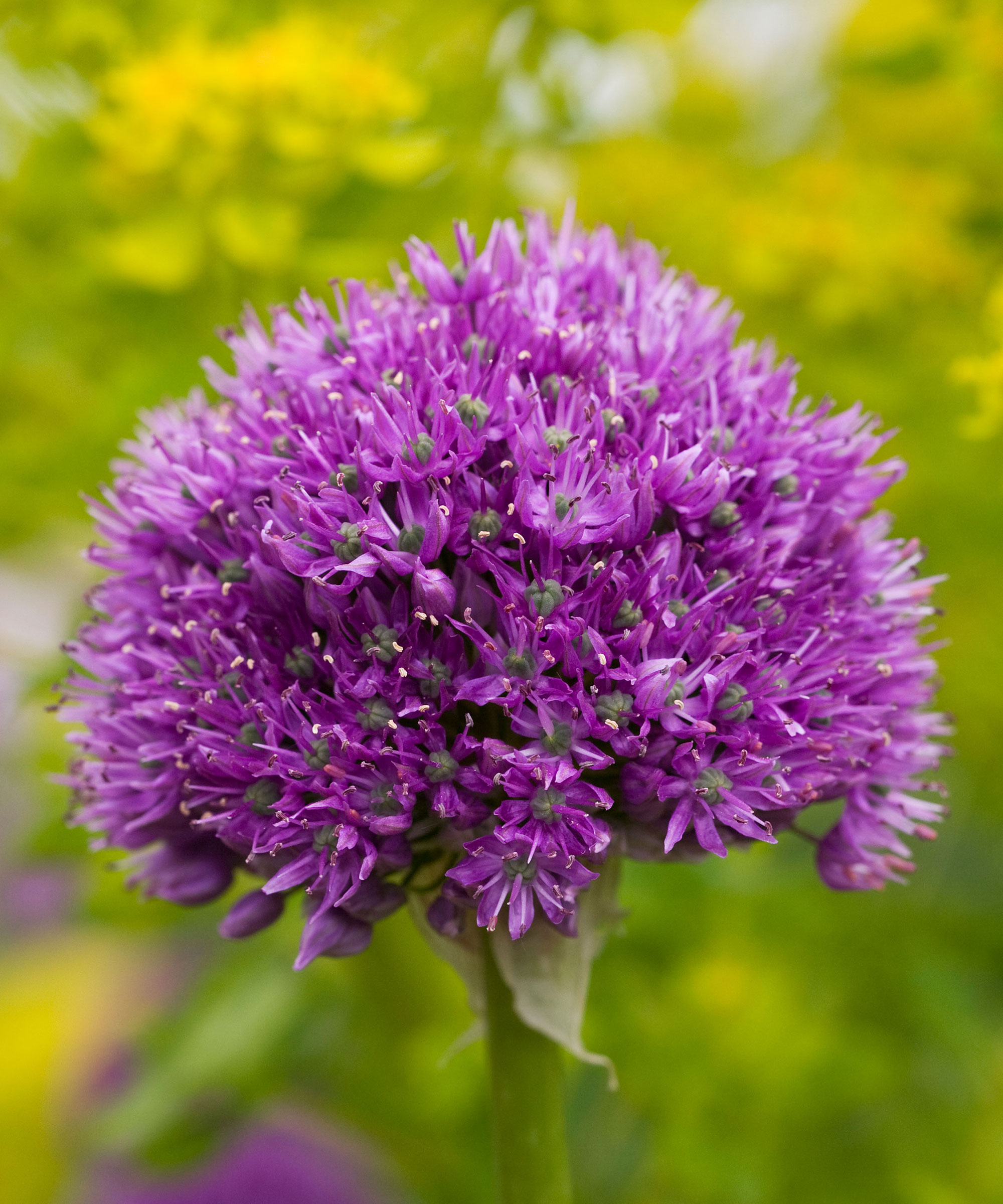
- Best for repelling: Aphids, slugs, cabbage worms, Japanese beetles
- Where to plant: Full sun, well-drained soil
- Hardiness: USDA 3-8, the bulbs are generally winter hardy
The allium genus, which includes ornamental onions, chives, garlic and shallots is regarded by many gardeners as a broad-spectrum natural pest repellent. Species in the allium family, notably garlic, emit a sulphureous odor that masks the smell of other plants but is undetectable to humans.
When planting allium bulbs and choosing the best varieties, we’re spoilt for choice. May and June are the main flowering month for alliums, and when popular varieties like ‘Purple Sensation’ (available at Nature Hills) come into bloom, but there are varieties that flower earlier and later in the growing season.
Allium neapolitanum Cowanii flowers in March/April and has pretty, white colored blooms on short stems. These look breathtaking when allowed to multiply throughout the borders. Plant them around rose bushes to repel spring aphids.
There’s good evidence that garlic is a natural deterrent to pests. The Garlic Farm advises garlic companion planting by planting three or four cloves around a rose bush: 'the sulphur present will disperse in the soil and be taken up by the rose, making it less palatable to the little bugs'.
3. Peppermint
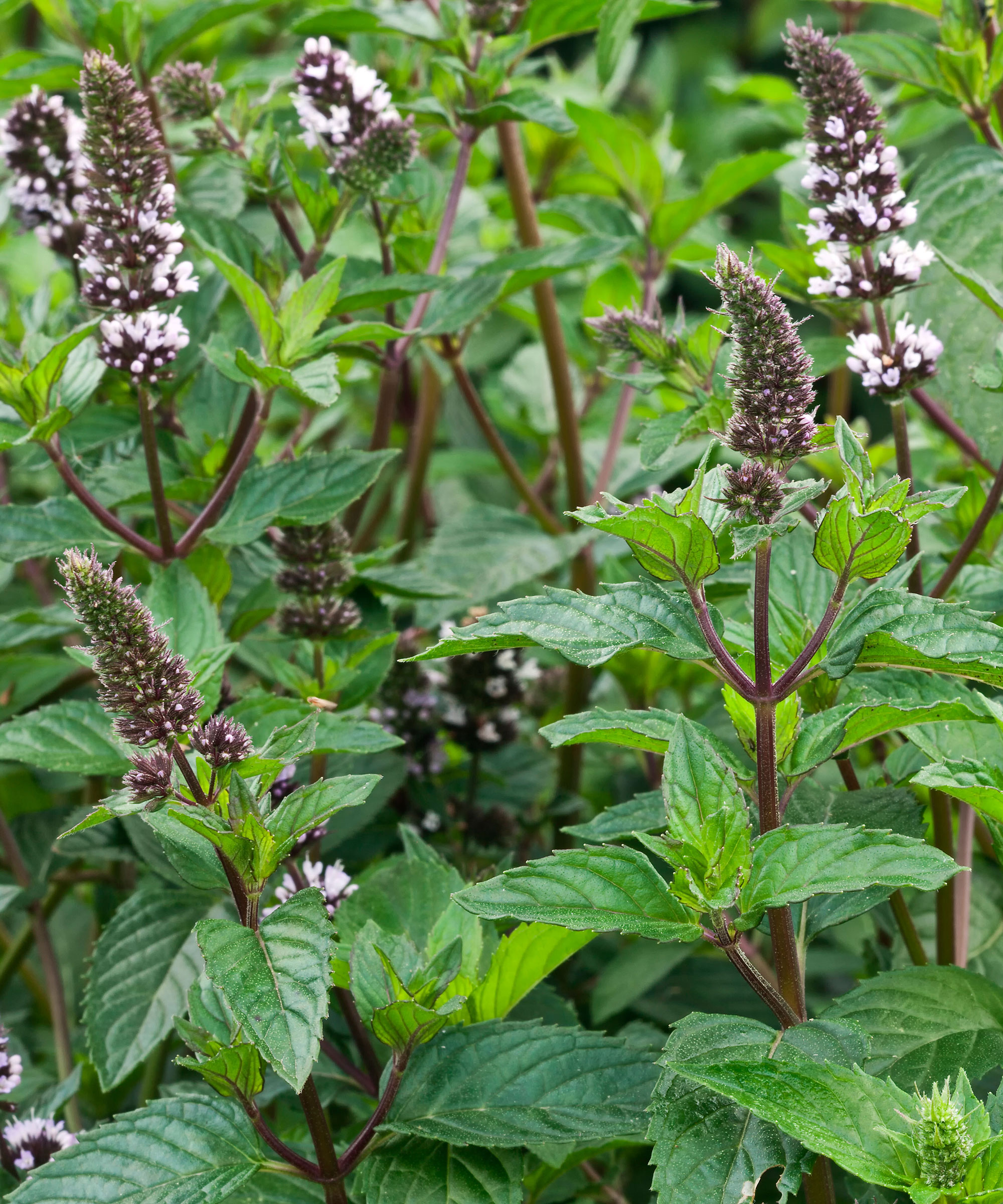
- Best for repelling: Ants, spiders, mosquitoes
- Where to plant: Partial shade, moist, well drained soil
- Hardiness: USDA 3-11
According to Rentokil, experts in commercial pest control, 'ants hate the smell of mint, especially peppermint' (Mentha x piperita). While ants rarely cause harm in the borders, they’re more of a nuisance on patios and near the house. They love soils that are soft, dry, and aerated, and that is what is typically beneath patio slabs.
So, if you're keen to find ways of including some ant-repellent plants in your yard, you could try growing mint by the back door (also handy for adding the leaves to teas, cooking and cocktails!) and by outdoor dining areas.
Mint plants are invasive, so restrict their roots by growing plants in a container garden, large planters, or raised garden beds. Grow these on or around a patio to help to keep the little mini beasts away – keeping the compost moist will benefit the plant, and also help to deter ants.
When your mint outgrows its pot, it’s very easy to lift it out and split it into two or three sections that can be replanted into other pots. Other strongly scented mint varieties to try are Mentha ‘Candymint’ and spearmint (Mentha spicata), available at Nature Hills.
4. Artemisia absinthium
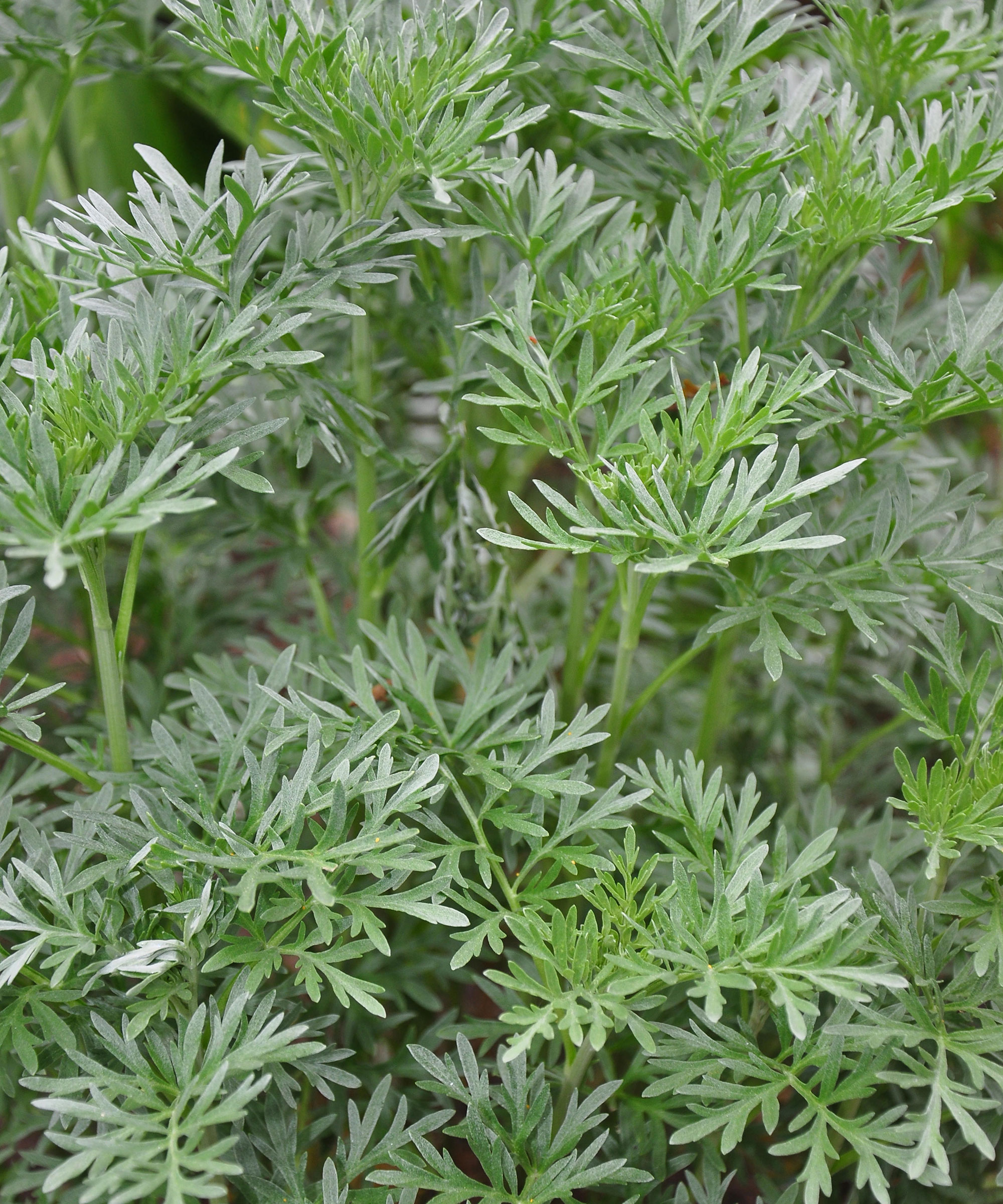
- Best for repelling: Earwigs, caterpillars, white fly, aphids, flies, moths
- Where to plant: Sunny spot, well-drained soil
- Hardiness: USDA 4-9
Wormwood (Artemesia absinthium) is a handsome evergreen woody perennial with a strong sage-like odor that is purported to repel various pests, and can even be a way of getting rid of earwigs.
'The dried leaves can be scattered around ants' nests, the base of fruit trees or vegetable gardens to deter insects and also slugs and snails,' says Floral Encounters, an organic flower farm in central New Jersey.
Artemesia grows to 3ft high. Its small yellow flowers have little ornamental value, but its attractive grey-green feathery foliage is a useful foil for brightly colored blooms and dark foliage. Once established it needs little care and will tolerate poor, dry soil types.
5. Thyme
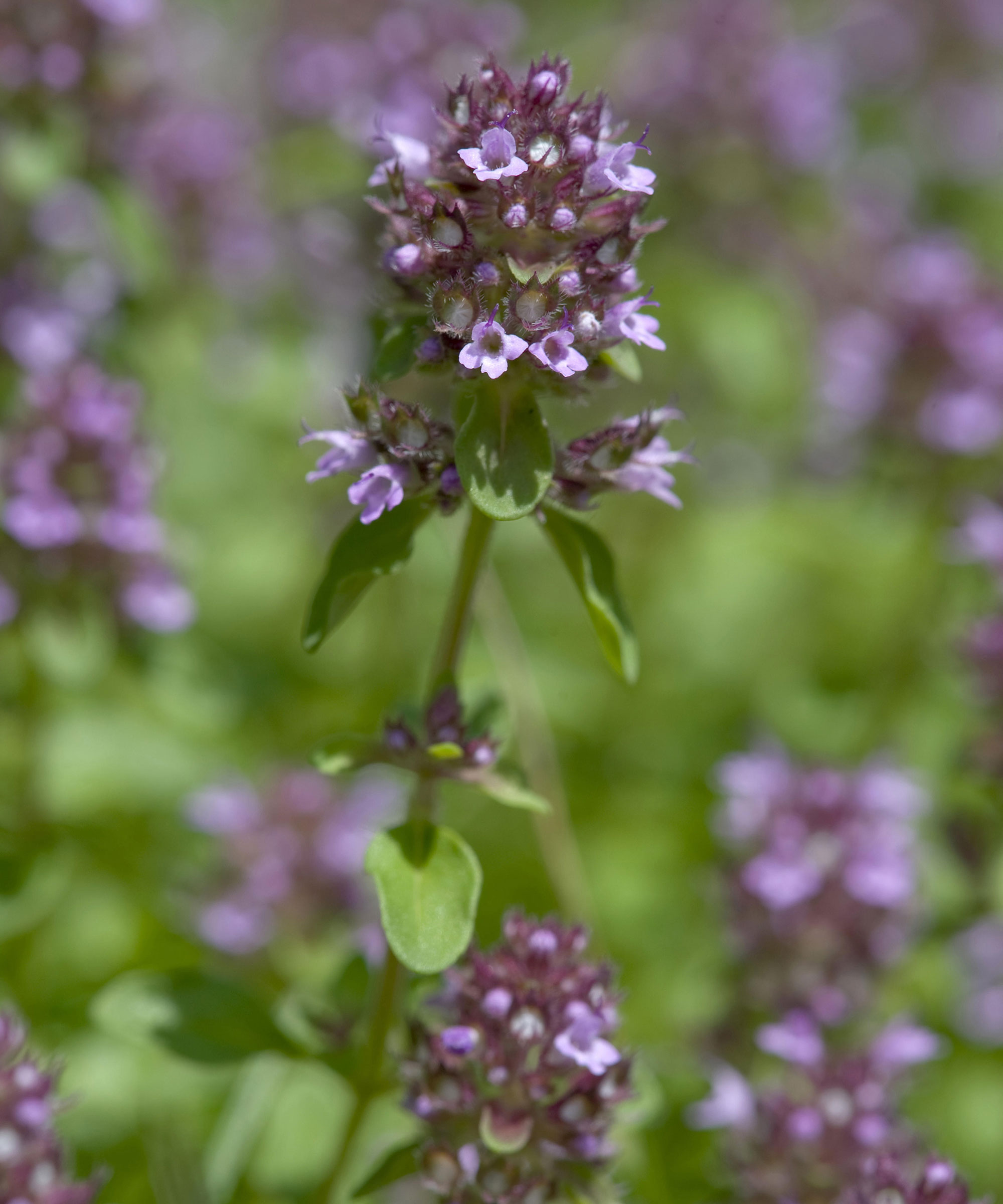
- Best for repelling: Mosquitoes, cabbage loopers, white flies, tomato hornworms
- Where to plant: Sunny spot, well-drained soil
- Hardiness: USDA 4-9
We may enjoy the scent of thyme crushed between our fingers and use its aromatic leaves in cooking, but some bugs can’t stand the smell of it, according to Lake Norman Pest Control. 'Thyme is a herb you can rely on when insects are bothering your home and garden. Once those pesky pests get a smell of thyme, they will fly or crawl away from your property.'
'And that burning sprigs of lemon thyme on the BBQ is also effective at keeping nuisance bugs away from eating areas,' says The Old Farmer's Almanac.
Thyme is a great ground-cover plant that’s ideal at the front of borders and in containers and planters. It’s easy to grow provided it’s planted in a sunny situation and in free-draining soil – too much winter wet will cause it to rot.
If you want to try growing thyme, there are dozens of attractive varieties to try. Rose thyme has sweet scented pink flowers in early summer. The scent of lemon thyme (available at Burpee) is is said to be repugnant to ants – try growing between patio floor slabs to help keep them at bay.
6. Basil
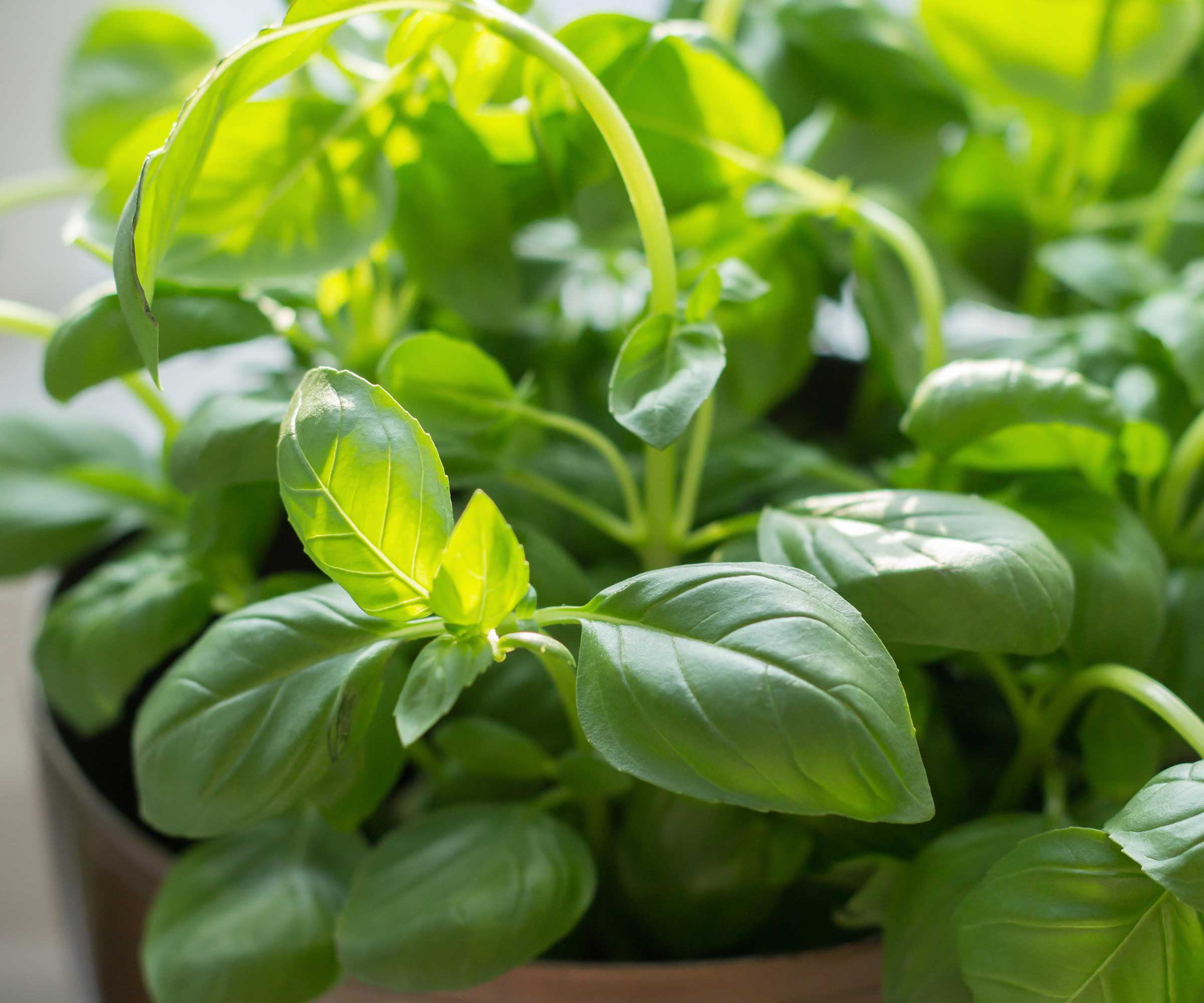
- Best for repelling: Tomato hornworms, thrips, aphids, flies, ants, mosquitoes
- Where to plant: Sunny spot, well-drained soil
- Hardiness: USDA 10-11 (grown as an annual elsewhere)
Growing basil alongside your tomatoes is said to repel tomato and tobacco hornworms as well as thrips and aphids. Hornworms (Manduca quinquemaculata) are easily identifiable by their v-shaped white markings and their distinctive black horns. They can cause complete defoliation of tomato plants but have also been found on potato, eggplant and pepper. The tobacco hornworm is similar-looking and related, but more often found in the southeast. Basil looks nice grown with marigolds, as edging around a vegetable plot.
As well as being a good pest deterrent in the vegetable garden, basil can easily be tucked into flower beds too. Drifts of purple basil looks good at the front of flower borders among low growing plants with red or pink flowers like pelargoniums or saxifrage.
Basil ‘Sweet’, available from Burpee, is a popular green leaved variety and is great with homegrown raw tomatoes (that have hopefully been protected from pests by the basil!).
Basil is best sown indoors from February to August, to protect young seedlings from slugs. Plant out when all risk of frost has passed and when plants are large enough to handle.
7. Marigolds
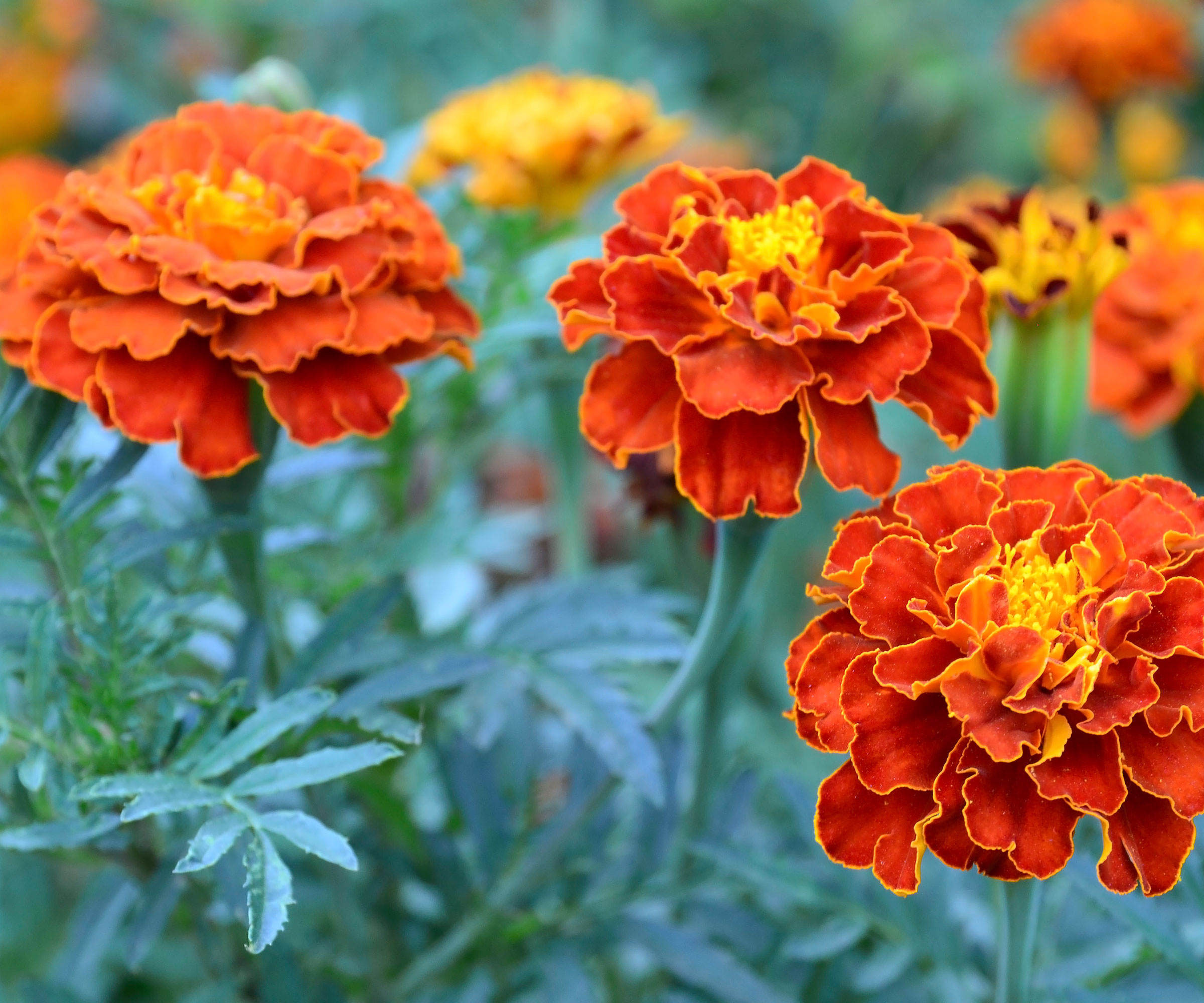
- Best for repelling: Whitefly, blackfly, other aphids
- Where to plant: Full sun, fertile, well-drained soil
- Hardiness: USDA 10+
Many gardeners swear by using Tagetes patula (French marigolds) to ward off pests in the vegetable garden. Their strong scent is thought to reduce aphids, blackfly and whitefly. One thing’s for sure, their cheery yellow, red and orange flowers bloom from summer right through to the first frosts and they will lure in beneficial pollinators like hoverflies and pollen beetles.
Marigolds also make great decoy plants so are typically used for companion planting. If you grow marigolds near French beans for example, the slugs go for the young marigold plants first, so you bide yourself some time for the bean plants to develop strongly, making them less prone to slug attacks.
‘Naughty Marietta’, available from Amazon, is a tried-and-trusted tagetes variety, with deep golden yellow flowers with central maroon blotches. ‘Solan’ has an orange crested centre with a dark red frill.
Note that calendula, the so-called ‘pot marigold’ isn’t a true marigold (but it’s still great at attracting beneficial insects).
8. Catnip (Nepeta cataria)
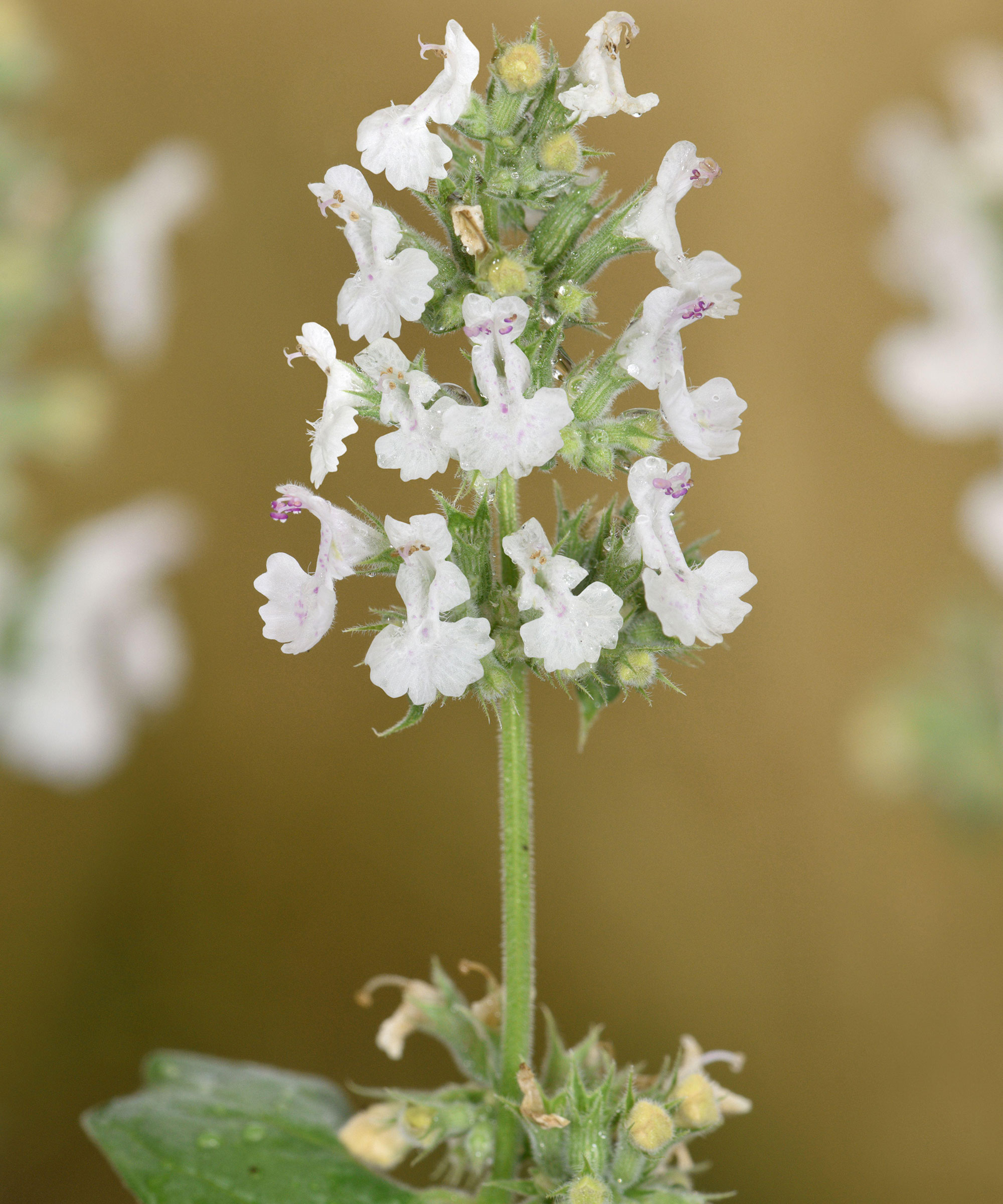
- Best for repelling: Japanese beetle, aphids, Colorado potato beetle, mosquitoes, cabbage looper
- Where to plant: Sunny borders, free-draining soil
- Hardiness: USDA 4-8
Catmint (Nepeta) is a popular garden plant but studies show that it’s the true catmint (catnip) Nepeta cataria (available from Nature Hills) that does a good job of deterring many pests. The good news is the true catmint also looks great in borders, with hummocks of handsome grey green foliage and pretty white flowers that last from early summer to fall. The plant dies back to the ground over winter, with fresh shoots appearing in spring.
According to Pondinformer.com, the pesky Japanese beetle does not like the scent of catnip, so grow it in long drifts around your roses and other ornamental garden plants to keep this problem pest at bay.
Japanese beetles (Popillia japonica) are considered a problem in gardens because they feed on the leaves, flowers and fruit of a wide range of plants. They’re identifiable by their metallic green bodies and bronze wings.
Apparently, aphids don’t like the strong scent of catnip either, so it’s ideal as a companion plant near crops you’re trying to protect. Beans, cucumber and lettuce are among the most vulnerable.
9. Hardy geraniums
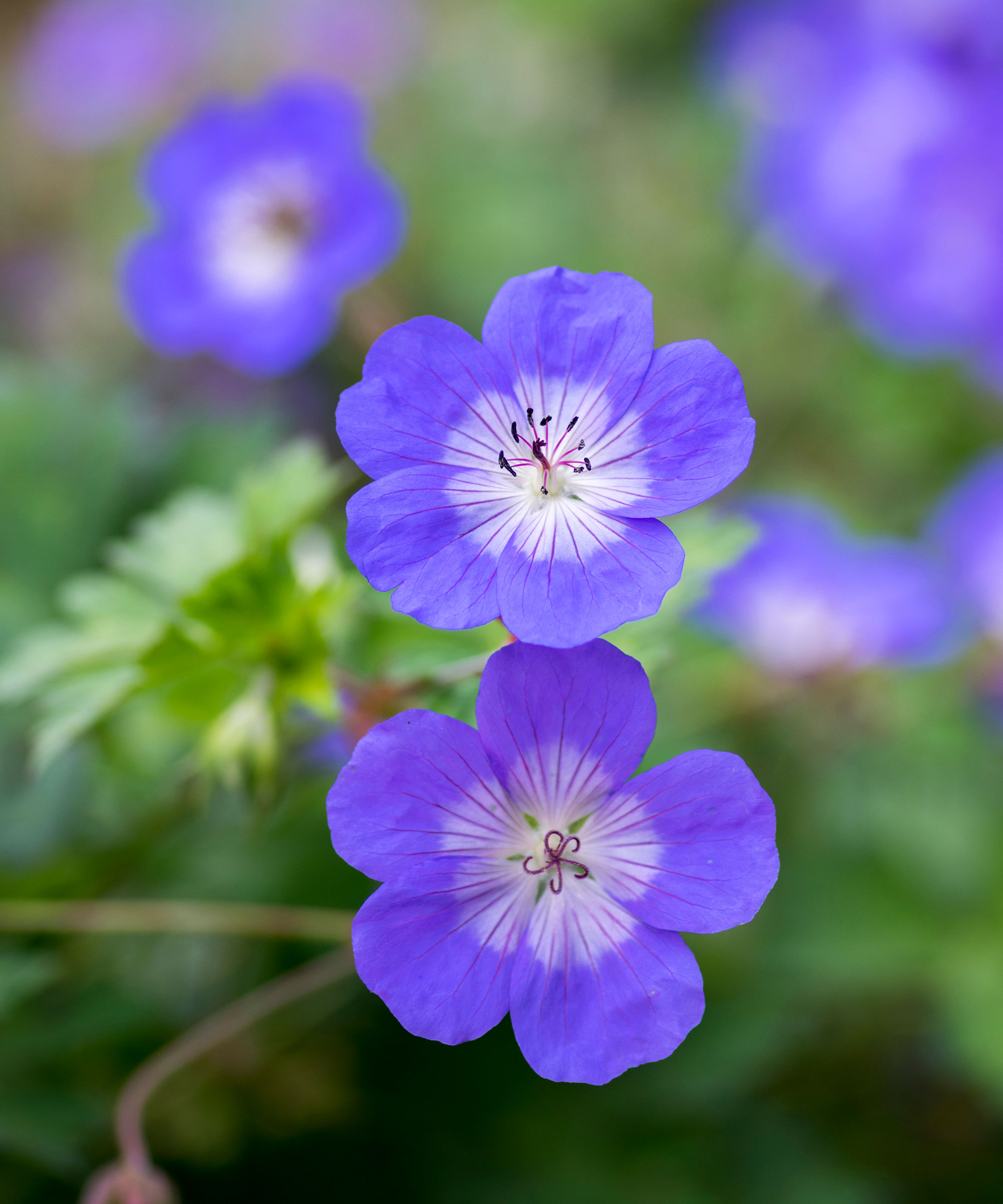
- Best for repelling: Slugs and snails
- Where to plant: Shady areas, tolerate most soils
- Hardiness: USDA 3-9
Rather than wrestle with your conscience on whether to ‘humanely’ get rid of slugs and snails in your garden, why not simply select plants that are unpalatable to them in the first place? That way you’ll keep local mollusc populations at bay, especially if you take additional steps to deter them, such as encouraging natural predators like birds.
It's certainly worth learning how to grow hardy geraniums as they are fantastic garden plants and work well in a wide range of settings. They’re very tolerant and will put up with dry or damp soil, sun or shade. They also happen to be a plant that slugs and snails hate, which are put off by their pungent, hairy foliage.
There are over 300 hardy geranium varieties to choose from. ‘Rozanne’ (available from Nature Hills) is a popular mid-border variety, while ground-hugging Geranium sanguineum var striatum (also from Nature Hills) is great for the front of borders.
Other textured and scented garden plants that slugs and snails are repelled by, include rosemary, ferns, lavender, foxglove and stachys.
10. Dill
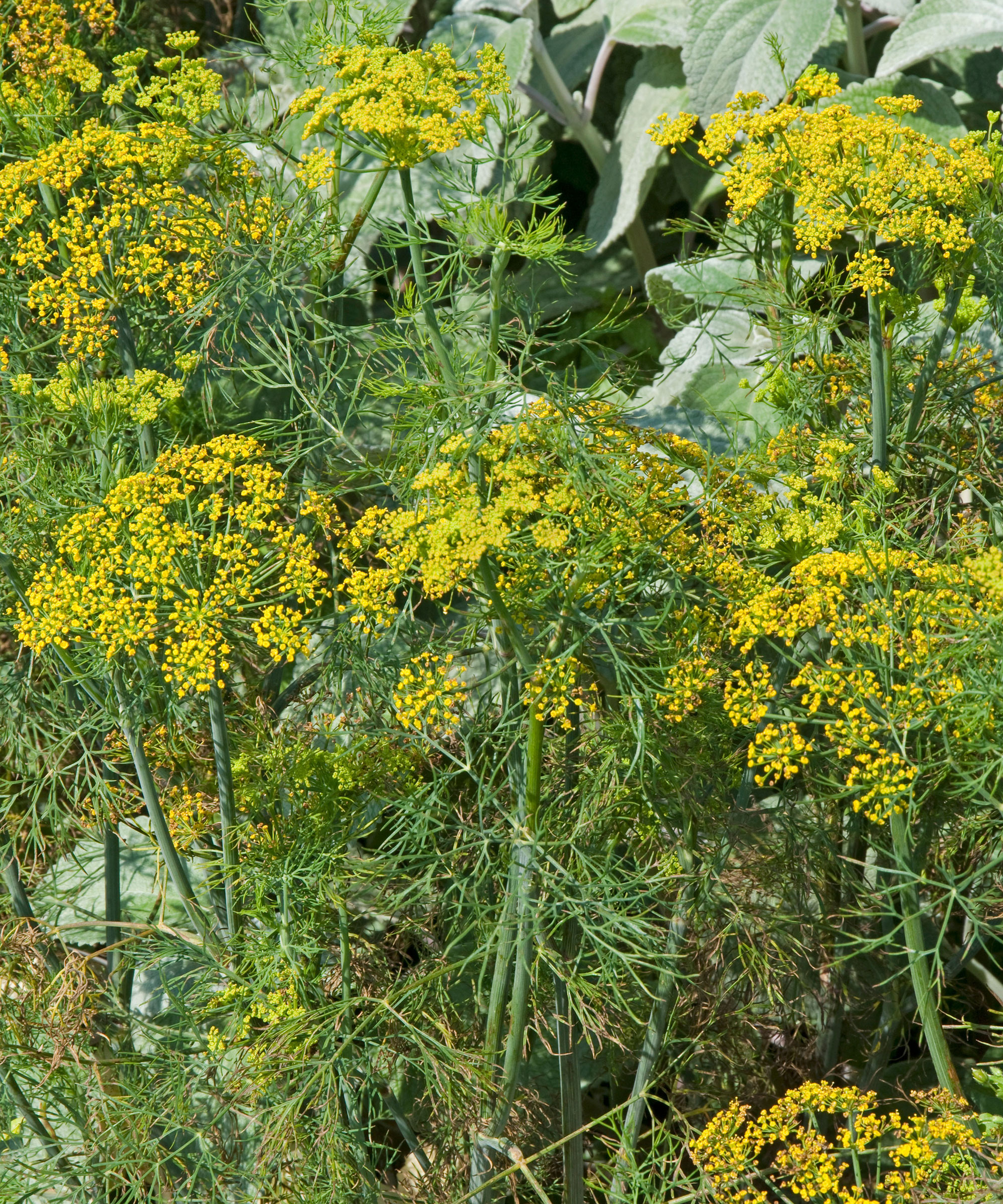
- Best for repelling: Cabbage moth, spider mites
- Where to plant: Full sun, free-draining, fertile soil
- Hardiness: USDA 3-7 (grown as an annual)
Everybody should grow dill in their garden. Not only does it have its culinary uses, it’s attractive in its own right, with ferny foliage and vibrant yellow flowers that are similar to fennel. And there’s more… Dill is said to repel spider mites and cabbage moths. It also attracts beneficial pollinators like hoverflies and ladybirds (which eat aphids).
Dill makes a good companion plant if you're growing dahlias because it attracts the tachinid fly which parasitizes earwigs, a common dahlia pest. The vibrant yellow flowers go well with brightly colored dahlia blooms.
Dill is also a good ‘trap crop’ to lure any hornworms away from the tomato plants. The leaves of dill can be used to deter squash bugs – cut them off and sprinkle them over the squash plants.
Anethum graveolens is the main dill species. ‘Bouquet’ (available from Burpee) and ‘Fernleaf’ (also from Burpee) are dwarf forms that are good for herb planter ideas – also a sensible option if your soil is not very free-draining.
Dill doesn’t transplant well and is easiest to grow from outdoor sowings that are made from April to July. If allowed to seed, you’ll get new plants popping up in your garden the following year. It’s a short-lived plant and old plants should be dug up and disposed of in fall.
Pests generally hate highly aromatic herbs and plants, so it's always worth adding these pest-repellent plants to your yard to both deter them from your space and to protect other flowers and crops from infestations.
As well as favorites such as lavender, mint, artemesia, thyme, and French marigolds, you can go for varieties with strongly scented foliage, such as lemon thyme, mint, basil, lemon grass, marigold and catnip around a patio seating area to deter pests.







